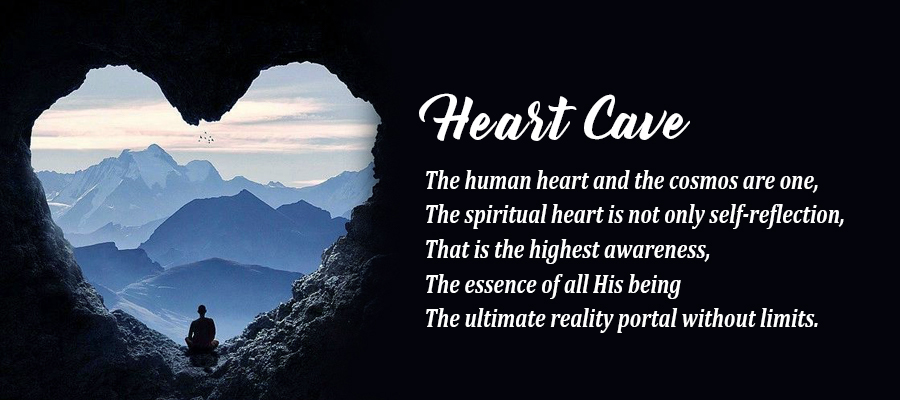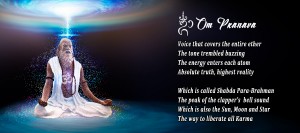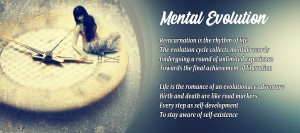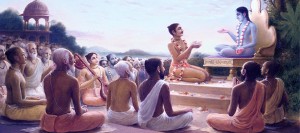- 1The Spiritual Heart is not just the soul and the psychic activity
- 2Hridaya: The Spiritual Heart is not Anahata Chakra
- 3Where should be the natural place of the Witness Consciousness?
- 4The limitlessness of the Spiritual Heart is absolute
- 5The Heart is the Object and Subject meditation
- 6Build perception a subtle organ
- 7The Eye of the Heart
- 8The energy source of individuality
The Eye of the Heart
The expression “the eye of the Heart” appears also in the Sufi tradition. Here it represents the opening toward the Divine, the eye through which the depth of the Heart can be seen and through which the Heart can know the Supreme Divine Reality. According to this description, we can imagine this eye of the Heart having two faces:
- One is oriented toward “interior,” through which the meditator can “see” the infinite depths of the Heart;
- The other is oriented toward “exterior.” This is the eye through which the Supreme Subject, the Inner Knower, God, or the witness consciousness is witnessing the world.
For these traditions, this place, deep in the Heart, is the symbol of the point of contact with God. Cultivating the Heart is a fundamental spiritual need.
Art and contemplation represent some of the ways to cultivate Spiritual Heart, but the best method is through meditation for the revelation of the Spiritual Heart and Love.
Any authentic spiritual school should induce or even “teach” the sacred principles of the kingdom of the Heart: pure love, yearning, fervor, the sacred tremor, the aspiration for God.
The role of the most important rituals in ancient traditions was to eliminate the discursive and reflective tendency of the mind and to dissolve the force of identification, which keeps alive the citadel of individuality.
In such moments, the complete silence of the mind was necessary before entering the sanctuary (which corresponds with the secret chamber of the Heart). It was thus that the initiates were able to rise above their egos, their personal existence, toward that which they called the Being of Being, toward the Supreme Essence.
The Heart is a subtle organ of wisdom, of that so-called “transcendental intellect. The rational mind cannot understand the reasoning of the Heart. Because it cannot be understood by the rational mind, the role of the Spiritual Heart is ignored and even denied. In refuting spiritual intuition, which comes from the Heart, to focus only on reason, the illuminating role of the Heart is abolished. Rational thinking is called reflection because it is, in fact, a reflection of the energy of the Heart. Because of this, ancient traditions held reason, rationality, to be just a capacity for mediated, reflected knowledge.
The mind knows through a process of acquiring information. The Heart knows through surrender, trust, and joy.
The knowledge of the mind is sequential; the knowledge of the Heart is instantaneous and undivided. It is a revelation. It is holistic. It reveals Advaita, non-duality.
Analogies have been made between the Sun and the Moon, the Heart and the mind on the other. In Hinduism the mind is named chandra mandala, “the circle of the moon,” and the Heart is named surya mandala, “the circle of the Sun.”
Even the corresponding traits of these two organs are symbolic in and of themselves: radiant presence in the Heart and reflection, discursive intelligence in the mind. The mind is, in fact, just a tool for adapting ourselves to the world.
Intuition, which comes from the Heart, is divine because it represents direct participation in the universal spiritual wisdom.
The Heart, being the Spiritual Sun, is an image of the Center. It is considered the place of revelation, the vital center of being, and the source of the deepest intuition. The Heart is a “theophanic” organ (theophany is a visible manifestation to humankind of God). It is a sacred symbol of excellence.
The mind is thus an imperfect instrument with an inherent inability to understand and realize atman.
The truth of Self cannot come from him who has not realized that he is the Self. The intellect cannot reveal the Self beyond its duality of subject and object.
The energy source of individuality
Primordial subtle energy ascends from the Heart to the mind, through an energy channel (known as atma nadi). Here it feeds the process of thinking and implicitly the individual consciousness with all its attachments and hopes, illusions and suffering. That’s why the mind is seen as a Moon which simply reflects the light of the heart’s Sun.
Coming back to the Heart, all the vain noise of the world is quieted.
The Heart is a sanctuary of silence.
There, in the most sacred intimacy and solitude of the “cave of the Heart”, the moods of individuality fade away and the consciousness of unity is revealed. There, the world and man are one. So, in a paradoxical way, the solitude and intimacy of the Heart reveal the essential unity of all existence.
Sometimes the Heart is understood as a means of revelation. It is also an organ of the purification, reintegration, and transfiguration of our being. For instance, for a Tantric everything that brings pleasure tunes the Heart, seen as the cosmic instrument of consciousness.
Through detachment from any individual accent comes a spontaneous sublimation in the Heart. In this way, each sensation is brought to its purity and then offered to the infinite space of the Heart.
The Heart is the bridge between finite and infinite, personal and transpersonal, the present and eternity. It is openness toward the Whole. The Heart represents main opportunity to transcend the limitations of individuality.
This function of the Heart makes it a borderline territory because it simultaneously bears the characteristics of the Ultimate Reality and of the finite realities. The Inner Heart is a portal to direct experience of what is called “spirit,” consciousness – concepts that easily elude all definitions.





